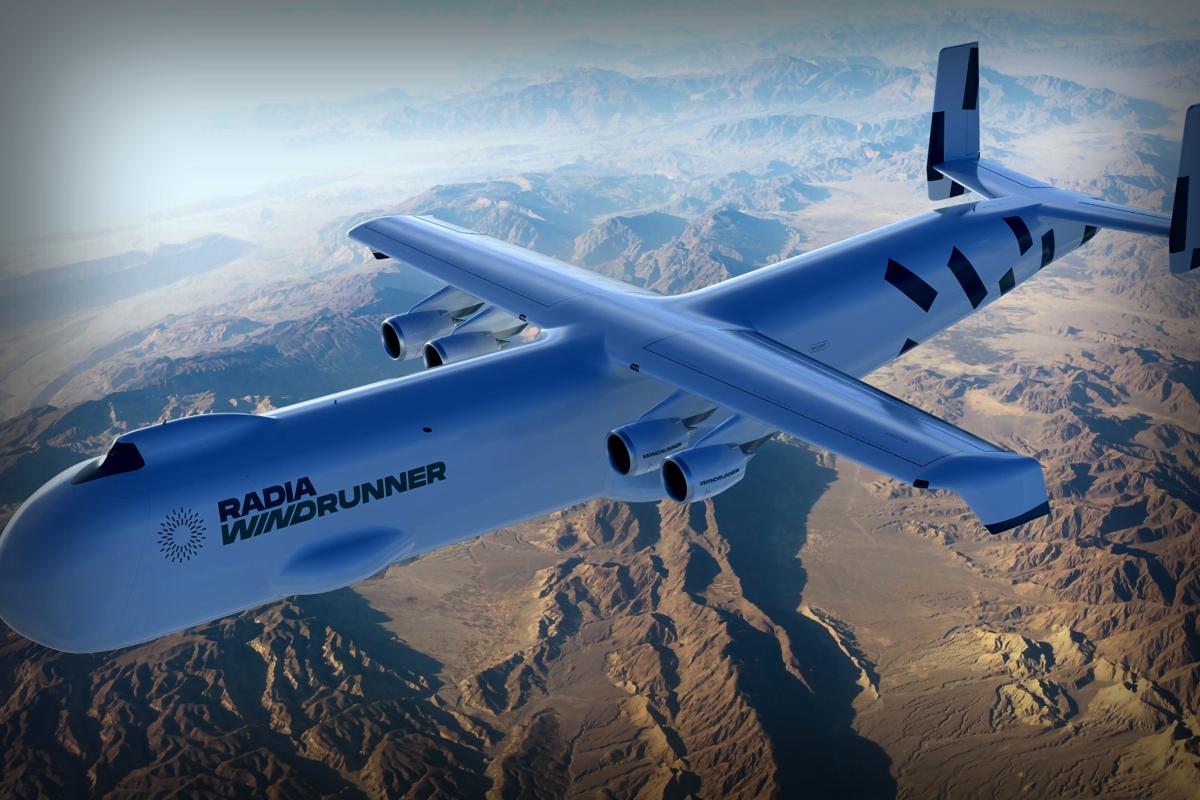- A Colorado startup is unveiling its ambitious cargo aircraft as a potential solution for military logistics.
- The Windrunner has the capacity to transport four modern fighter jets or six Chinooks with ease.
- Though only design images have been shared, Radia has announced a partnership with the Pentagon for its development.
Radia, a late-stage startup based in Boulder, Colorado, originally developed the Windrunner to transport large wind turbine blades, but their new goal is to enable military airlifts that can include Chinook helicopters and fighter jets.
This massive cargo plane is said to offer twelve times more cargo space than the current US military heavyweight, the Boeing C-17 Globemaster III.
According to information released by Radia, the Windrunner will serve as an “ultra-large air cargo aircraft,” designed specifically for transporting various military assets. Initially, it was sized to lift wind turbine blades, which can be up to 330 feet long.
With a wingspan of 261 feet and a length of 356 feet, the Windrunner is set up to accommodate payloads that measure 344 feet long, up to 33 feet wide, and nearly 30 feet tall.

This makes Radia’s aircraft exceed the capability of the infamous Antonov An-225 Mriya, which was the world’s largest cargo plane with six engines before being destroyed during conflict in Ukraine.
Radia has stated that the Windrunner’s payload weight will stand at around 160,000 pounds—less than the C-17’s maximum of 170,900 pounds, but the company emphasizes that it’s targeting the military’s cargo volume challenge.
As noted in their release, “Modern joint capabilities often find themselves restricted by space long before they reach their lift potential,” highlighting a critical logistic aspect the Windrunner aims to address.
Furthermore, Radia believes this cargo plane can successfully carry up to four fighter jets, including the F-16 Fighting Falcon and F-35C Lightning II Joint Strike Fighter.
Alternatively, it has the design strength to transport six CH-47 Chinooks with their full assembly. Currently, transporting these helicopters by air requires rotor removal due to height limitations with existing military planes like the C-5 Super Galaxy and C-17.
When loaded to capacity, the Windrunner is expected to operate effectively within a range of 1,200 miles, slightly shorter than the F-35C’s operational capability of 1,350 miles. For reference, the C-17 can travel up to 2,760 miles with a full payload.
An additional focus for Radia is ensuring the Windrunner can take off and land on shorter, unpaved runways as short as 6,000 feet. In contrast, most large military cargo planes typically require around 8,000 feet of runway for takeoff at maximum weight.
So far, Radia has only shared design sketches of the aircraft, leaving questions about whether they have constructed any prototypes. Attempts to get a statement from their press team after business hours went unanswered.

In May, the startup announced a research cooperation with the US Transportation Command, indicating that they’re pushing for increased scrutiny from the Defense Department to explore the Windrunner’s military potential.
Mark Lundstrom, Radia’s founder and CEO, expressed aspirations to kickstart “initial operations” for the Windrunner by 2030. To expedite the certification process, they plan to use already packaged and assembly-ready aircraft components.
Providing insight into their leadership, the company’s defense project manager, Kenneth Bibb, is a retired Major General of the US Air Force who has experience managing Air Mobility Command, which facilitated the military’s evacuation from Afghanistan in 2021.
According to private investment analytics, Radia has raised about $130 million in funding so far.



















